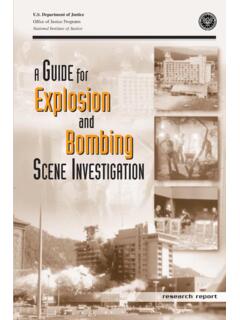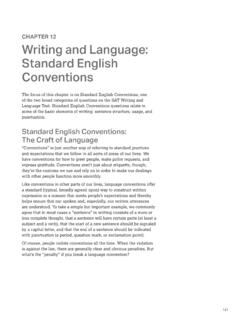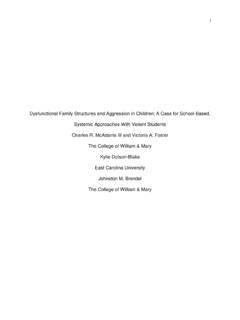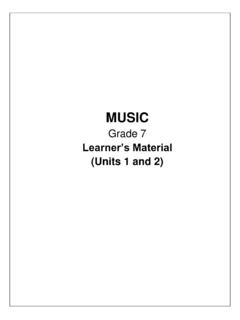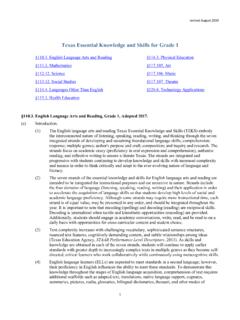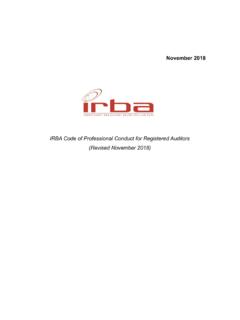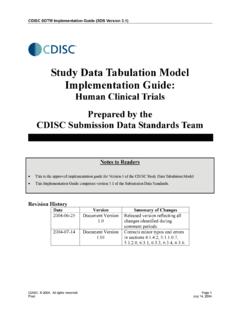Transcription of The Analysis and Decision of Summary Judgment Motions·
1 The Analysis and Decision of Summary Judgment Motions A Monograph on Rule 56 of the Federal Rules of Civil Procedure \f1 " ( It Judicial Center ~ ~ If you have issues viewing or accessing this file contact us at Federal Judicial Center Board The Chief Justice of the United States, Chairman Judge Edward R. Becker Court of Appeals for the Third Circuit Judge J. Harvie Wilkinson III Court of Appeals for the Fourth Circuit Judge Martin L. C. Feldman District Court for the Eastern District of Louisiana Judge Diana E.)
2 Murphy District Court for the District of Minnesota Judge David D. Dowd, Jr. District Court for the Northern District of Ohio Judge Sidney B. Brooks Bankruptcy Court for the District of Colorado Honorable 1. Ralph Mecham Director of the Administrative Office of the Courts Director Judge William W Schwarzer Deputy Director Russell R. Wheeler Division Directors Steven A. Wolvek, Court Education Division Denis J. Hauptly, Judicial Education Division Sylvan A. Sobel, Publications & Media Division William B. Eldridge, Research Division Federal Judicial Center, 1520 H Street, , Washington, DC 20005 1 ~.
3 ~ .. ~:' i ' NCJRS MAR 4 199? ACQUISITIONS The Analysis and Decision of Summary Judgment Motions A Monograph on Rule 56 of the Federal Rules of Civil Procedure William W Schwarzer Alan Hirsch David J. Barrans Federal Judicial Center 1991 This publication was produced in furtherance of the Center's statutory mis-sion to conduct and stimulate research and development on matters of judi-cial administration. The statements, conclusions, and points of view are those of the authors. This work has been reviewed by Center staff, and publi-cation signifies that it is regarded as responsible and valuable.
4 It should be emphasized, however, that on matters of policy the Center speaks only through its Board. Cite as Schwarzer Hirsch & B , arrans, The Analysis d D .. Judgment Motions (Federal J d' . 1 Can eClSlOn of Summary u lCla enter 1991) Department of Justice National Institute of Justice 134865 This document has been reproduced exactly as received from the person or organization originating it. Points of view or opinions stated in this document are those of the authors and do not necessarily represent the official position or policies of the National Institute of Justice.
5 Permission to reproduce this :tSis'P i material has been gr~ Domain ;yudi ci a1 Center Federal to the National Criminal Justice Reference Service (NCJRS). Further reproduction outside of the NCJRS system requires permis-sion of the ~owner. To the late Alvin B. Rubin, Judge of the United States Court of Appeals for the Fifth Circuit, in appreciation of his great contributions to the administration of justice. Contents vii 1. History of Summary 1 2. The elements of Rule 9 3. Identifying Issues of Fact .. 13 General 13 Applications.
6 21 Admiralty and Maritime.. 22 Antitrust .. 23 Civil Rights and Constitutional 25 28 Corporations .. 29 30 Intellectual 31 Labor .. 32 Limitations .. 33 Personal Injury and Products .. 34 Securities Fraud .. ~.. 34 35 4. Summary Judgment in Bench Trials .. 39 5. Determining 43 6. Determining Genuine Disputes .. 45 The Burden on the Moving .. 45 The Burden on the Nonmoving 47 General Requirements .. 47 Admissibility of .. 50 Expert .. 52 The Judicial Function .. 57 Historical 57 Ulthnate Facts.
7 58 Choosing Among Inconsistent .. 64 7. Procedural 69 Partial Summary Judgment and Case Management .. 69 Cross-Motions for Summary 73 Timing of Motion and Discovery: Rule 56(f).. 74 Sanctions: Rule 56(g) .. 76 Appeals .. 77 Appealable .. 77 Scope of 79 Appendix: Fed. R. Civ. P. 56 .. 83 Table of .. 89 Table of Authorities .. 97 v Introduction Summary Judgment under Rule 56 of the Federal Rules of Civil Pro-cedure has been a source of controversy and confusion. Some have viewed it as a meretricious shortcut depriving litigants of their right to trial by jury, while others have seen it as a powerful docket-clear-ing device essential to overburdened courts.
8 Disparities in judicial at-titudes have contributed to widely differing interpretations and appli-cations, resulting in much confusion over proper use of the Summary Judgment procedure. In its 1986 trilogy of Summary Judgment decisions, the Supreme Court infused Rule 56 with new legitimacy and opened the way to-ward a clearer and more coherent jurisprudence. Growing concern over cost and delay in civil litigation has focused increased attention on Rule 56 as a vehicle to implement the objectives of Fed. R. Civ. P.
9 I-the just, speedy, and inexpensive resolution of litigation. Achiev-ing these objectives requires informed and sophisticated use of the rule. This monograph is intended to improve understanding and use of Rule 56. It does not claim to be a definitive statf'ment. The decisions in this field, far from offering a set of ready answers, provoke lively differences of opinion. While we suggest what we believe to be rea-sonable interpretations of the cases, we recognize that they may not be the only interpretations. The value of this exercise lies less in explicating a particular approach than in encouraging reflection on the critical issues.
10 We suggest ways of thinking about Summary Judgment that can help judges and lawyers work more effectively with the rule. Better understanding of Rule 56 can reduce cost and delay in civil litigation by promoting a sounder and less error-prone application of the rule (which should lead to greater confidence in its use) and by reducing the frequency of wasteful Summary Judgment proceedings. We first recount the history of Summary Judgment (Chapter 1) and parse the elements of Rule 56 (Chapter 2). We then address the three major elements of Summary Judgment Analysis : What is an issue of fact?









